What is PPR Platform Technology?
PPR Platform Technology is our proprietary RNA editing technology that combines a PPR Domain, which can target and bind a specific RNA, with an Effector Domain, which has capability of RNA control such as single nucleotide substitution.
PPR Platform Technology enables engineering of various molecules according to disease-causing RNA sequences, a new modality that overcomes various drug discovery challenges.
See here for research publications on PPR Platform Technologies.

Unique RNA targeting mechanism
RNA-binding protein technology that has different mechanism from other technologies
Single nucleotide substitution
Single nucleotide substitutions from C to U or U to C with proprietary enzymes.
Various approaches of RNA control
A variety of RNA controls, not limited to nucleotide substitution, are available with selection of Effector Domains.
Simple molecule
The designed PPR protein is single component, which enables us to select a variety of DDS.
![]()
01Unique RNA targeting mechanism
RNA-binding protein technology that has different mechanism from other technologies
The discovery of the RNA-binding mechanism of PPR (PentatricoPeptide Repeat) proteins, which have relation to RNA editing in plants, has enabled us to design and create proteins that sequence-specifically bind to any RNA sequences.
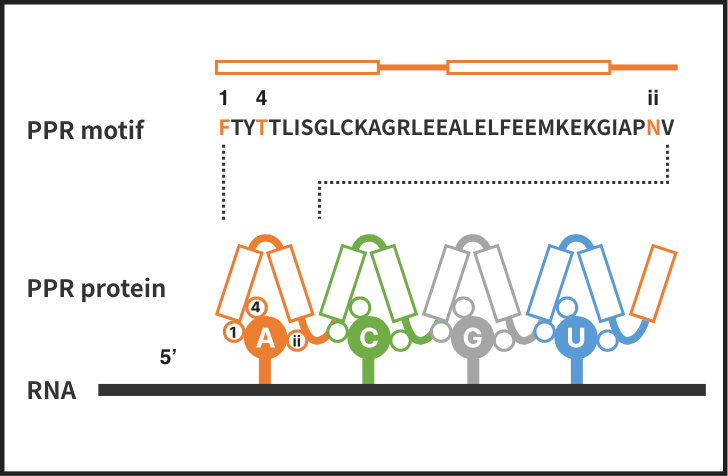
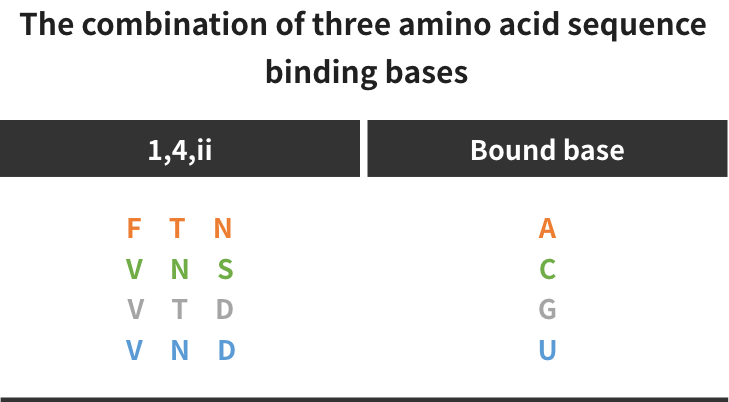
Yagi et al., PLoS One (2013)
Method for designing RNA-binding protein and its utilization using PPR motifs.[P 6164488; Kyushu University]
Properties of PPR proteins
- PPR proteins are composed of a continuous structure of units (PPR motifs) consisting of 35 amino acid residues.
- One PPR motif binds to one nucleotide base on the RNA
- The combination of three amino acid sequences within the PPR motif determine the specific base which the PPR motif can bind.
- We can design and create proteins that bind RNA sequence-specifically by joining PPR motifs according to the sequence of the target RNA sequence.
![]()
02 Single nucleotide substitution
Single nucleotide substitutions from C to U or U to C with proprietary enzymes.
By combining our proprietary base-substituting enzyme domain to PPR Domain, we can control single nucleotide substitution of C to U or U to C.
This technology enables the repair of RNA mutations that could not be targeted so far.
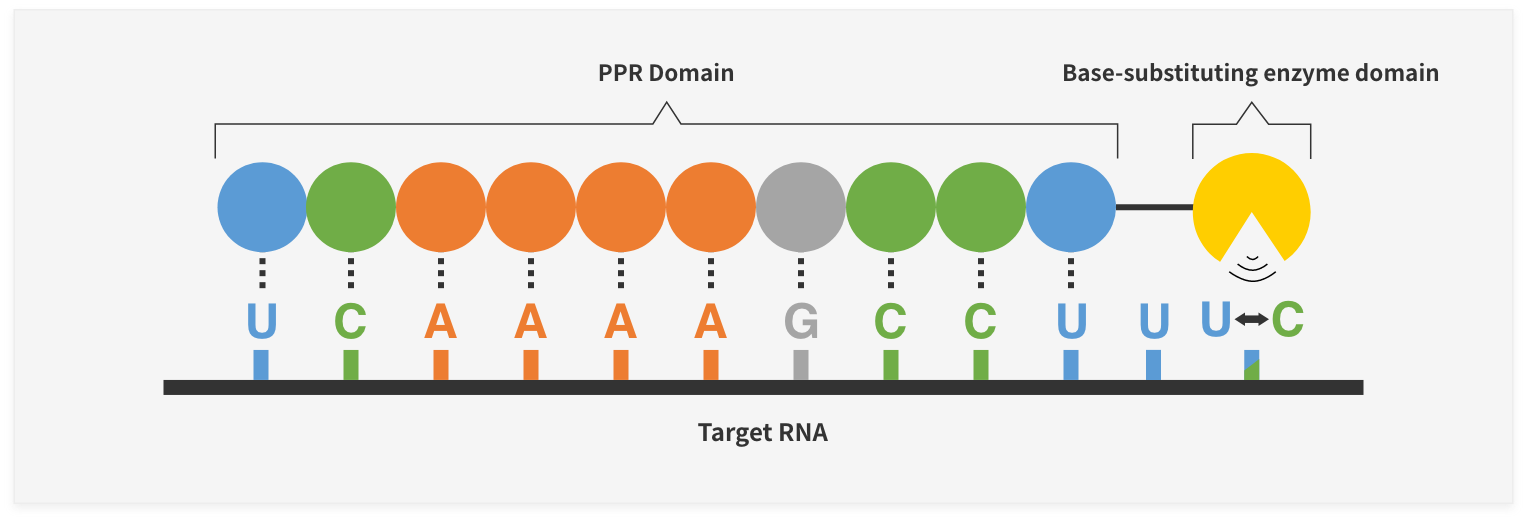
![]()
03Various approaches of RNA control
A variety of RNA controls, not limited to nucleotide substitution, are available with selection of Effector Domains.
By replacing the Effector Domains that combine into PPR Domains, we can control a variety of effects to RNA besides nucleotide substitutions.
Adding intracellular trafficking signals to PPR protein enables RNA targeting not only in cytoplasmic but also in nuclear or mitochondria.
Translation enhancement
PPR Domain + Translational control protein domain
Technology that can improve the translational activity of target proteins at the RNA Level- Applicable to proteins that cannot be covered by replacement therapy
Splicing control
PPR Domain + Splicing control protein domain
Technology that can control the splicing variants- RNA mutations can be removed by exon skipping.
RNA cleavage
PPR Domain + RNA cleavage enzyme domain
Technology to cleave target RNAs- Disease-causing RNAs can be eliminated.
RNA blocking
PPR Domain only
Technology that competitively binds to target RNAs, preventing the binding of other RNA-binding proteins.- Metabolism and function related to Target RNAs can be controlled.
![]()
04Simple molecule
The designed PPR protein is single component, which enables us to select a variety of DDS.
PPR Platform Technology can create a protein which can achieve both RNA binding and RNA control with a single protein molecule (PPR system).
When PPR system is administered as a gene, the gene sequence required for expression of PPR system is short enough to be loaded on adeno-associated virus (AAV) vectors and any other various DDSs (Drug Delivery Systems)
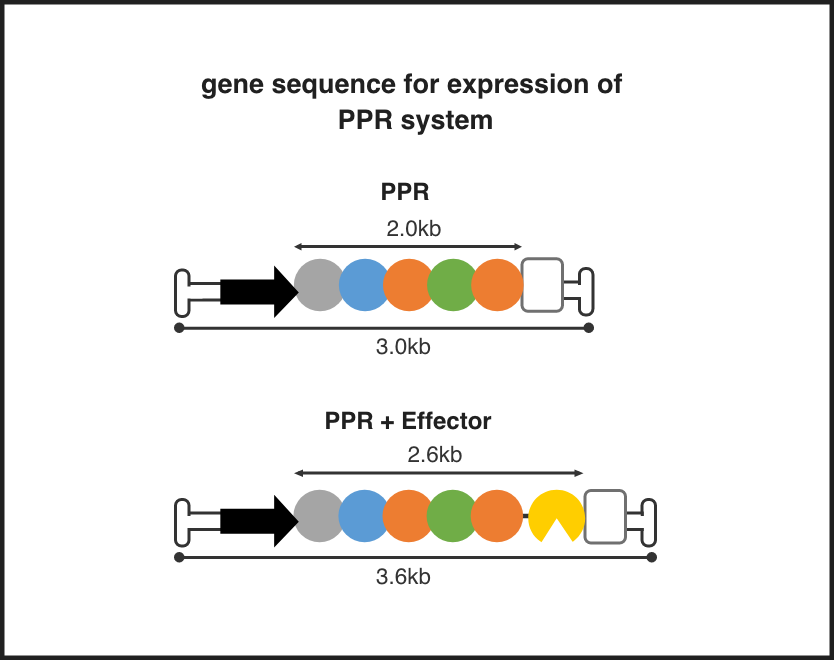
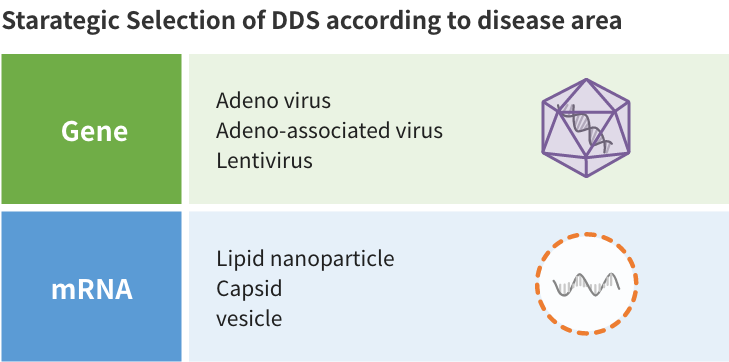
Application to Genome Editing
PPR Platform Technology is also capable of creating protein molecules that sequence-specifically bind to DNA.
Not limited to RNA editing, PPR Platform Technology also has potential applications as a genome editing technology.
